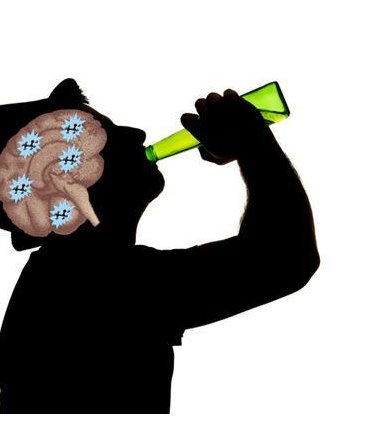|
|
|
| |
| |
|
Substance Use Snapshot Introduction - Sept 2018
|
![Substance Use Snapshot Introduction - Sept 2018]() |
|
|
|
|
|
 | December 2018
Substance Use Snapshot
Teenage Brain
|
|
|
|
|
 |
KEY POINTS
The brain develops very rapidly in the first 3-5 years of life. All structures are present by age 9, however, ongoing development and connections occur over time.
The last part of the brain to mature is the prefrontal lobe – this happens in the second phase of brain development that occurs during puberty. The prefrontal cortex is involved in planning, making decisions, and self-control. MRI images have demonstrated that brain development may not be complete until age 30.
|
|
|
Scans of the teenage brain show that teens use their amygdala (emotional centre) more often than their prefrontal cortex. Emotional levels often run high in teens as their brains haven’t yet developed those strong brain connections to the pre-frontal cortex. We know that healthy lifestyle habits support building strong brain connectivity.
During adolescence, connections between brain cells are strengthened in preparation for adulthood. The use of alcohol or drugs at this time can affect memory and organization. For optimal brain development it is best to avoid any substance use until adulthood.
|
|
|

Youth and Marijuana The Canadian Centre on Substance Use reports that Canadian youth have the highest rate of marijuana use in the developed world (CCSA, 2015). Marijuana is the most commonly used drug used among young people aged 15 to 24 years of age.
The latest research has demonstrated that early and frequent use can “seriously limit a young person’s educational, occupational and social development.” In fact some of these adverse effects may be irreversible. Marijuana use contributes to cognitive and motor function impairment. The research also shows that youth do not perceive marijuana to be harmful and this perception may contribute to increased use.
Education programs in schools have shown an increased delay to initiation of use by 20-40%. The purpose of the ‘Substance Use
Snapshots’ is to support conversation and education so our young people can make informed decisions. (CCSA, 2015, The Effects of Cannabis Use during Adolescence). | 
Youth and Alcohol The body and the human brain are still developing throughout adolescence and early adulthood. The frontal lobe is the last part of the brain to mature and is involved in planning, strategizing, organizing, impulse control, concentration and attention.
Drinking alcohol while these changes are occurring can have negative effects on the brain’s development.
In addition to this risk, puberty causes neurochemical and hormonal changes that make adolescents more likely to engage in risky behaviour and seek thrilling experiences. Drinking alcohol when strategy and planning skills are still underdeveloped and the desire for thrills is high can have harmful effects on a young person’s health and safety. (CCSA, 2014)
|
|
|
|
|

| The following guidelines may help to facilitate discussions with your child that balance factual information when emotions may run high:
- Remain neutral. Neutrality may be the single, most-important characteristic of a successful discussion.
- Encourage your child to discover as much information about the issue as possible.
- Keep the discussion relevant and moving forward by questioning or posing appropriate problems or hypothetical situations.
- Create a sense of openness to hearing and considering diverse views.
|
|
|
- Use unbiased questioning to help critically examine all views presented.
- Allow for the discussion of all feelings and opinions.
- Respect silence. Reflective discussions are often slow.
(BSCS – Science Learning, 2015. “Drug Abuse, Addiction, and the Adolescent Brain).
Parents, the video resources and print information are helpful conversation starters. Next month, the Middle School snapshot will take a more in-depth look at the impact Cannabis and Alcohol can have on youth.
|
|
|
|
|
|
|
|
|
The Greater Victoria School District is committed to providing safe and healthy learning environments for all students. As part of our approach, we have been focusing on mental health and substance use topics to help us promote well-being in our schools.
Substance use is a complex topic that often highlights varied philosophies, myths, and a great deal of fear. The research shows us that early interventions, particularly around critical thinking and decision making, has an impact on delaying use in youth. As well, open dialogue with adults, intentionality around attachment, and a focus on the
| factors that contribute to substance use, as opposed to the actual substances, also prevent, delay and reduce substance use in our students.
Our goal is to create a more cohesive, systematized substance use plan focusing on social emotional learning, that includes our youth and schools, community partners, and families. We strive for a shared vision, common language and consistent messaging over time, in order to support positive youth culture and a healthy perspective on substance use and mental health.
|
|
|
|
|
| |
|
|
|
|
|
|
|
|
| |
|